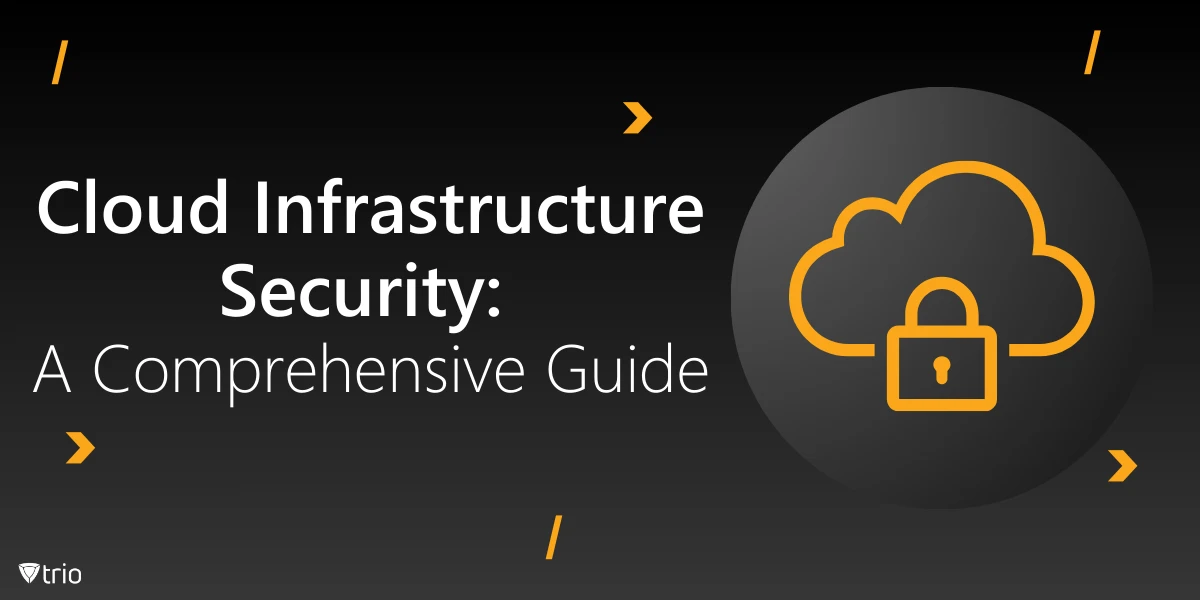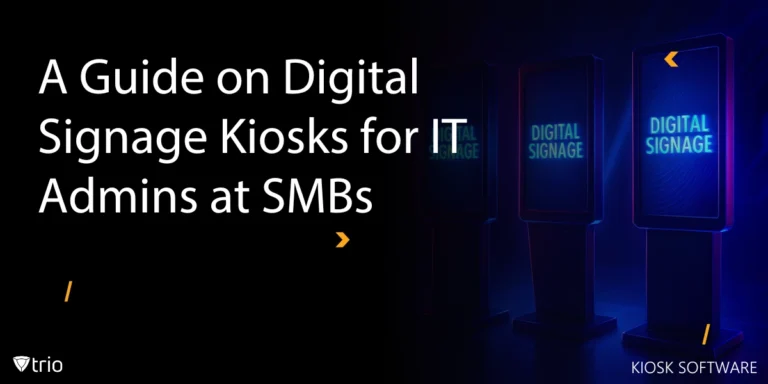In today's digital era, businesses are increasingly migrating to cloud environments to gain flexibility, scalability, and cost-efficiency. However, this rapid adoption has also introduced new security challenges, making infrastructure security in the cloud a critical priority for organizations. Ensuring cloud infrastructure security involves not just implementing technical measures but also adhering to best practices that help safeguard sensitive data and resources.
In this blog post, we'll explore the key aspects of cloud infrastructure and security, discuss types of cloud security, provide cloud security examples, and outline a cloud security best practices checklist to help businesses fortify their cloud environments.
What Is Cloud Infrastructure Security?
Cloud infrastructure security refers to the strategies, technologies, and practices used to protect the integrity, confidentiality, and availability of cloud-based systems and data. Cloud infrastructure encompasses virtualized resources such as servers, storage, and networking components that operate in data centers managed by cloud providers. To ensure robust protection, businesses must focus on securing both the underlying cloud infrastructure and the applications hosted within it.
As cloud environments are inherently different from traditional on-premises data centers, securing cloud infrastructure involves adapting to unique challenges such as shared responsibility models, dynamic scaling, and distributed architecture.
Types of Cloud Security
Cloud security measures can generally be divided into the following types:
- Infrastructure Security – Protects the hardware, software, and networks supporting the cloud environment. This includes firewalls, encryption, and multi-factor authentication (MFA).
- Application Security – Focuses on securing applications hosted on cloud platforms by identifying and mitigating vulnerabilities during the development and deployment phases.
- Data Security – Ensures that data stored, transmitted, or processed in the cloud remains secure, often through encryption and secure key management.
- Identity and Access Management (IAM) – Restricts access to cloud resources to authorized users only by enforcing policies and access controls.
- Governance and Compliance – Involves adhering to regulations and industry standards, such as GDPR or HIPAA, to ensure that cloud infrastructure and services meet legal and security requirements.

Configuring the Cloud Infrastructure Security Network
A crucial aspect of cloud infrastructure security is ensuring that the cloud infrastructure security network is properly configured. This involves securing the communication channels between different cloud components, including servers, storage systems, and applications.
By securing the network, businesses can prevent unauthorized access, detect potential threats, and safeguard sensitive information as it moves between cloud resources. The following strategies can be used to improve cloud infrastructure security network:
- Network Segmentation: By dividing the cloud environment into different network segments, businesses can limit access to sensitive data and applications.
- Firewalls and VPNs: Firewalls and virtual private networks (VPNs) create secure gateways between the public internet and the cloud environment, ensuring data is encrypted and protected from unauthorized access.
- Intrusion Detection and Prevention Systems (IDPS): These systems monitor network traffic for suspicious activities, blocking potential threats before they can compromise cloud resources.
Risks of Lacking Proper Cloud Infrastructure Security
The risks of cloud misconfiguration are significant and can have far-reaching consequences for businesses. Here are some key risks:
- Data Breaches: Weak security in cloud infrastructure can lead to unauthorized access to sensitive data, resulting in breaches that compromise personal information, intellectual property, and customer records.
- Financial Loss: Security failures often come with costs, such as fines for non-compliance with regulations, lost business opportunities, or operational downtime, which can heavily impact a company's bottom line.
- Service Disruptions: Inadequate cloud security can make infrastructure vulnerable to cyberattacks like Distributed Denial of Service (DDoS) attacks, causing disruptions that affect productivity and customer satisfaction.
- Regulatory Penalties: Many industries have strict compliance requirements (e.g., GDPR, HIPAA). A failure to secure cloud environments could lead to hefty fines and legal consequences if data protection regulations are violated.
- Reputation Damage: A security lapse can severely harm an organization’s reputation, leading to a loss of trust from customers, partners, and stakeholders, and potentially resulting in long-term business impacts.
- Data Loss: Poor security measures could lead to accidental or malicious data deletion, and without proper backup or recovery processes, companies may face permanent data loss.
- Insider Threats: Without proper identity and access management, insider threats from employees, contractors, or malicious actors could exploit cloud environments, leading to misuse or theft of critical information.
- Increased Vulnerability to Cyberattacks: Lax security practices make cloud infrastructure susceptible to a wide range of cyber threats, including malware, ransomware, phishing, and unauthorized access by attackers exploiting vulnerabilities in the system.
Cloud Security Best Practices Checklist
Ensuring robust cloud infrastructure security requires implementing proven best practices such as proper cloud cost management. Here’s a cloud security best practices checklist to help organizations safeguard their cloud environments:
- Secure Identity and Access Management (IAM): Use IAM policies to control access to cloud resources. Enforce least privilege principles, require MFA, and regularly review permissions.
- Encryption: Encrypt data both at rest and in transit. Ensure strong encryption protocols are in place, and manage encryption keys securely.
- Regular Security Audits: Perform regular audits of cloud infrastructure security configurations. Audit cloud infrastructure security settings to identify misconfigurations or potential vulnerabilities.
- Monitor and Log Cloud Activity: Use cloud-native logging services to monitor and review cloud activity. Ensure all access and changes to cloud infrastructure are recorded and regularly analyzed.
- Network Security Measures: Implement firewalls, VPNs, and IDPS to secure the cloud infrastructure network. Use network segmentation to limit access to critical resources.
- Patch Management: Ensure that cloud infrastructure and applications are regularly updated with the latest security patches to mitigate vulnerabilities.
- Backup and Disaster Recovery: Maintain regular backups and ensure a robust disaster recovery plan is in place to minimize downtime in case of an attack or failure. Having backup plans and cloud migrations strategies for specific instances can go a long way.
Cloud Security Examples
There are several prominent cloud security examples that highlight how businesses can protect their cloud environments from threats:
- Data Encryption: Google Cloud offers encryption services by default, ensuring that data at rest and in transit is protected using strong cryptographic protocols.
- IAM Best Practices: AWS provides extensive IAM features, allowing businesses to assign granular permissions to users and services, enforce MFA, and log all access attempts.
- Vulnerability Scanning: Microsoft Azure includes built-in security services such as the Security Center, which continuously monitors cloud resources for vulnerabilities and recommends remediation steps.
These examples show how cloud providers are taking proactive measures to ensure cloud infrastructure security, giving businesses confidence in the protection of their data and applications.
Conclusion
As businesses increasingly rely on cloud environments, ensuring robust infrastructure security in the cloud is paramount. From IAM policies and network segmentation to encryption and regular security audits, there are numerous ways organizations can protect their cloud infrastructure. By adopting cloud security best practices and learning from cloud security examples, companies can effectively mitigate risks and ensure their cloud environments remain secure. Regularly auditing cloud infrastructure and security configurations and maintaining a cloud security best practices checklist are crucial steps in safeguarding valuable data and applications.
Ensure your cloud environment is secure and compliant with Trio’s comprehensive Mobile Device Management (MDM) solution. From safeguarding data to preventing security breaches, Trio helps you manage and protect your cloud infrastructure effectively. Start your free trial today and experience robust cloud security tailored to your needs.
Get Ahead of the Curve
Every organization today needs a solution to automate time-consuming tasks and strengthen security.
Without the right tools, manual processes drain resources and leave gaps in protection. Trio MDM is designed to solve this problem, automating key tasks, boosting security, and ensuring compliance with ease.
Don't let inefficiencies hold you back. Learn how Trio MDM can revolutionize your IT operations or request a free trial today!





